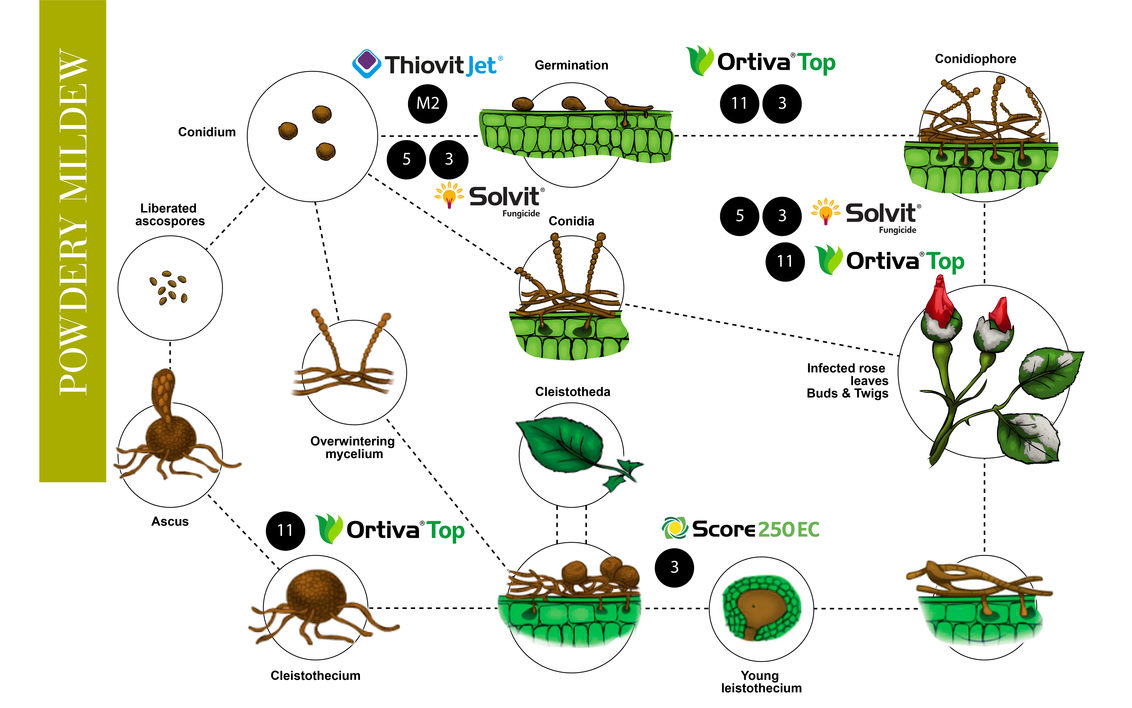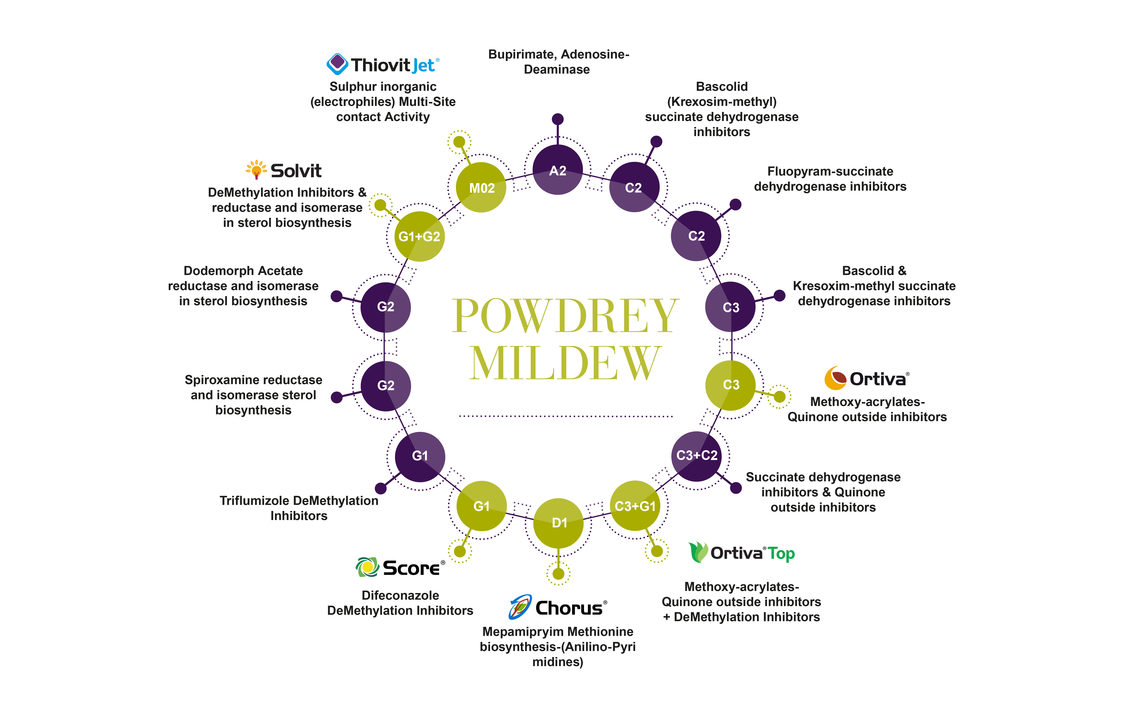Powdery Mildew Solutions Guide
Powdery mildew fungi form white, talcum like spots called “colonies” on leaves, stems and flowers. Over time, these colonies increase in size and number to cover the plant’s surface. If not controlled, severe infections will cause leaves to turn yellow, brown and then drop, resulting in reduced plant vigor and growth. While powdery mildew is often first observed on the upper surface of the leaves, both sides may develop colonies, so it is important to check both sides of the leaf when scouting.
Susceptible Crops
Several different fungi cause powdery mildew, and each prefer different plants. The fungi listed below favor the corresponding plant types. Erysiphe cichoracearum is a common powdery mildew fungus that can infect many plants, including:

Symptoms
- White powdery spots or coating on both sides of leaves, stems and young buds.
- Flower petals and bracts of poinsettia can also be affected.
- Yellow or brown leaves.
- Distorted leaves and flower buds or undeveloped flowers.
- Stunted growth.
Powdery mildew can be more serious on woody ornamentals like roses and crape myrtles because it attacks new growth including buds, shoots, flowers and leaves.

Powdery mildew infection on the leaves and flower head of roses
Environmental Conditions Conducive to Powdery Mildew
- Temperatures are between 17°C – 22°C
- Relative humidity levels are 70% or greater
- There is reduced light intensity
Moisture on plants from dew or irrigation does not favor the development of powdery mildew and can even limit the disease development by inhibiting germination and killing the spores.
Cultural Tips
- Provide a clean, dry growing environment
- Check incoming plants for disease
- Scout fully expanded leaves weekly, particularly in the lower to mid-canopy where air movement may be limited
- Keep humidity low by heating and venting as needed
- Remove diseased plants immediately to limit spore production and spread
- Overhead irrigation may reduce the spread of powdery mildew as it washes the spores off plants

Powdery Mildew Prevention Programs
Prior to disease development, apply fungicides in a rotation on a 14-day interval. For active infections, shorten the application interval to 7 days.
Spray program for Powdery Mildew

Powdery mildew resistance management

Your Complete Powdery Mildew Solution
A preventive fungicide rotation is essential for successfully controlling powdery mildew. Following this recommended program and incorporating appropriate cultural practices can help reduce the threat of powdery mildew in greenhouses and nurseries. Powdery mildew can affect a wide range of herbaceous and woody ornamental crops. Knowing which crops are susceptible, coupled with good scouting and a preventive rotation of effective fungicides, can allow you to avoid the unsightly effects of powdery mildew on your plants. The following recommendations help reduce the risk of disease in your operation.
